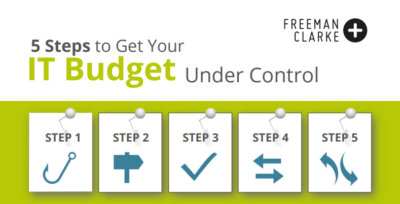Infographic: 5 steps to get your IT budget under control
To download, save or print this Infographic, click here
Read moreTo download, save or print this Infographic, click here
Read moreAt the beginning of 2021, CIO.co.uk outlined what they believed would be this year's top eight challenges for IT leaders:...
Read moreFACT: The CIO/CTO position is the only Board position where the necessary knowledge and skills need constant updating. Just like...
Read moreLet’s start with a definition. For us, digital transformation means using IT and technology to dramatically change your business for...
Read moreIn previous installments of this series, we discussed the key trends in the future of manufacturing and provided a checklist...
Read moreOur previous installment on the future of manufacturing discussed the main trends and their effects on mid-market businesses. In this...
Read moreThe IT industry often deliberately spreads fear, uncertainty, and doubt in the marketplace. They create confusion about the future, and...
Read moreSuddenly the office is closed, and everyone’s working from home. The IT team is coping, but you’ve got nagging doubts...
Read moreWe held the LinkedIn live event "IT Roadmap for Growth – the pitfalls, myths and how to get it right!"...
Read morePlain English board-level briefings focused on technology strategies to deliver competitive advantage and business success.
You can unsubscribe at any time.
Call us on 0203 020 1864 with any questions.
Graeme Freeman
Co-Founder and Director
Plain English board-level briefings focused on technology strategies to deliver competitive advantage and business success.
You can unsubscribe at any time.
Call us on 0203 020 1864 with any questions.








